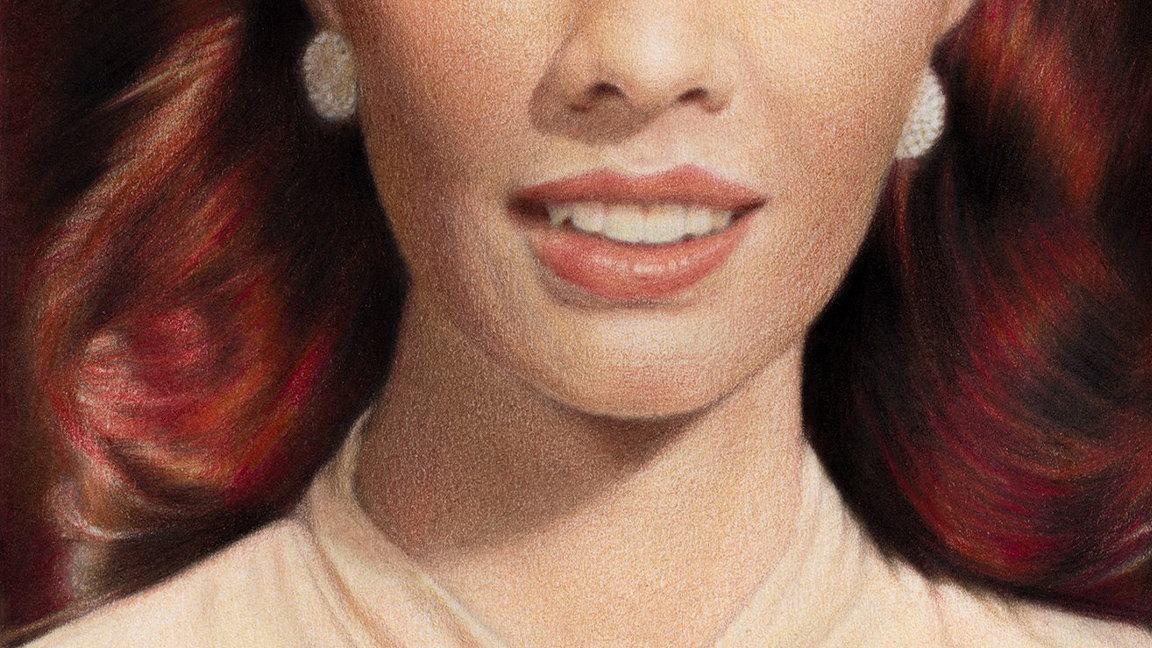
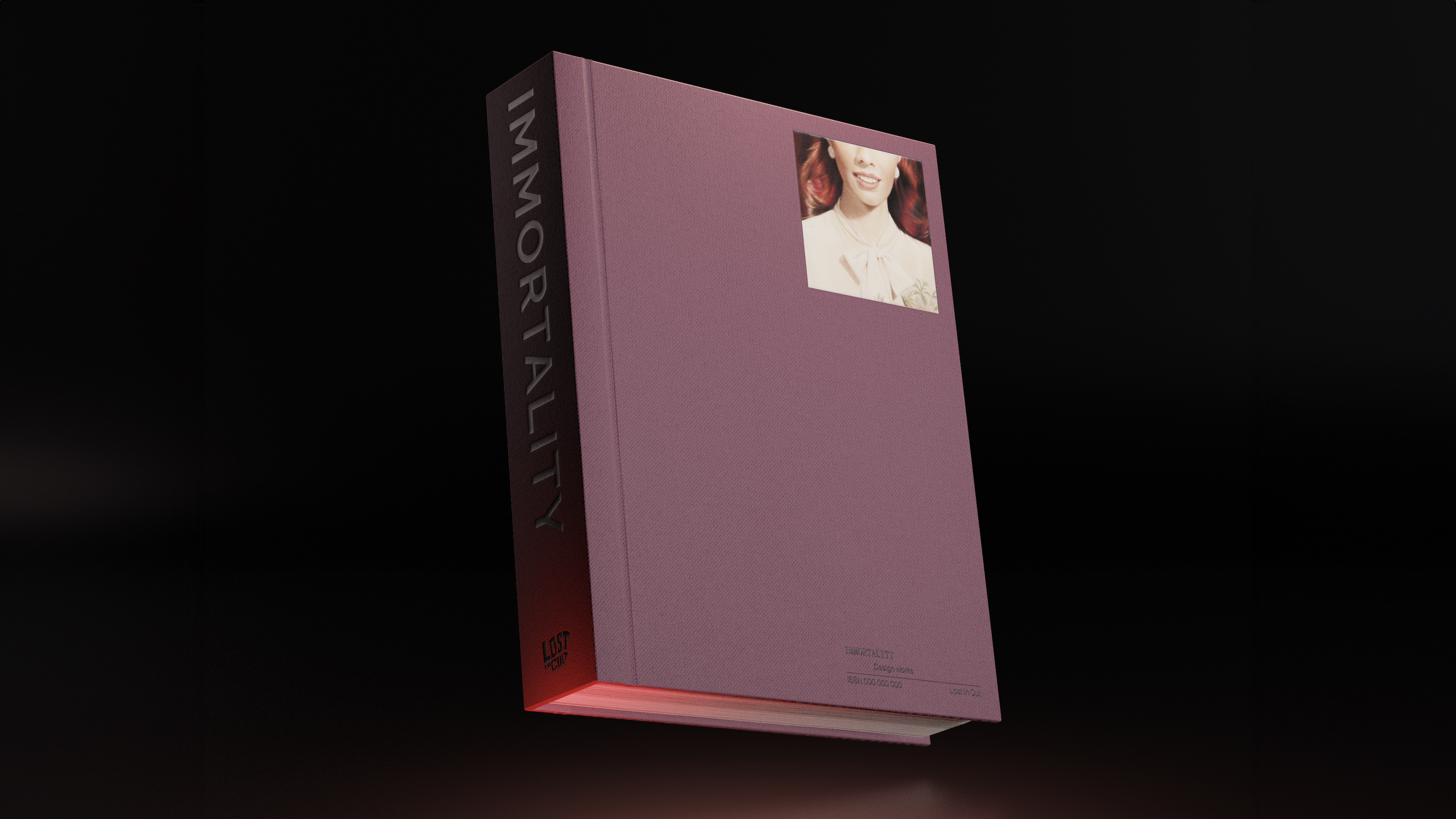
The collector's book covers the making of the BAFTA-winning game Immortality, as well as the films made for it. The book is available from Lost in Cult. Pre-orders are available until March 8th, 2024, priced £59.99. Lost In Cult is based in the United Kingdom and ships internationally.
Immortality: Design Works is a new collector's book that revels in the messy complexity of its source material, the BAFTA-winning game of the same name, while demonstrating the power and importance of good design and a passion of preserving creative work.
This high concept book covers the making of the game's three films as well as creating the game itself through behind the scenes interviews that detail the influences on creator Sam Barlow. The Deluxe Edition features replica poster art, music from the films on an era-designed cassette and more collectibles, including reproduced continuity polaroids.
On the surface Immortality: Design Works resembles just another collectors book, a celebration of a thing you love. But digging below, taking a look at the detail and thoughtful nature of each element of this book right down to its section-sewn bindings, and I begin to see a book that truly extends the themes and ideas of the game.
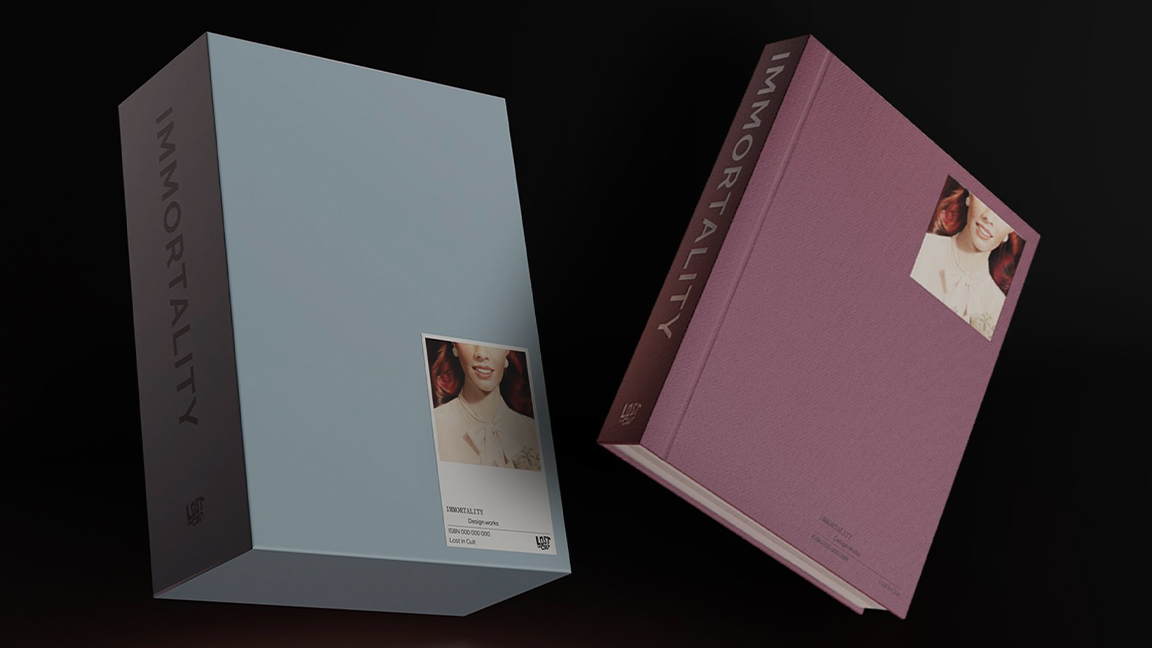
If you've yet to play Immortality, it's something quite special (and appears in our feature covering the best FMV games and has just released in PlayStation 5). This horror game revolves around the fictional model-turned-actress Marissa Marcel who made three films in 1968, 1970, and 1999 that never got released, and now she's missing. Players must examine hours of film clips, behind the scenes snapshots and TV interviews for clues as to what ever happened to Marcel.
Immortality is a complex puzzle; a stylistic mix of influences that perfectly replicates era-specific filmmaking and editing techniques and celebrates the ideas of preservation and curation of art. Immortality and Lost In Cult, a publisher dedicated to cult game preservation, are a perfect match.
Speaking with Lost In Cult's design director, Rachel Dalton, the desire to do justice to Immortality's complex world-building and attention to design meant they were a perfect fit. "We're obsessed with documenting and preserving gaming history and these kind of pivotal moments when people really explore the medium in a new way," she says.

Immortality is a unique experience, designed around investigating a large catalogue of content to draw threads between decades of film clips and unearth the game's hidden truths. "We were really keen to create an object that invites the reader to do the same thing," says Rachel.
She tells me Immortality: Design Works has been "one of my favourite projects to work on because there's so many layers in Immortality". This involves the player peering into perfectly replicated film clips, and the films themselves, three entire era-accurate movies, exploring the actor's lives, of playing with time. Linking everything is a supernatural tease of something weird, a minacious something behind every film clip.
"It couldn't be more of a rich body of work for a graphic designer to get to play with, it's hugely fun," laughs Rachel. The designer tells me how the game's creators, Sam Barlow and Natalie Watson, came armed with prime references for the collectible ephemera in the Deluxe Edition, including era-specific ticket stubs and vinyl albums to poster art. "That was really fun, doing that kind of era specific stuff," reflects Rachel.
The designer picks up the vinyl album sleeve for Immortality Sounds Across Time Bundle and turns it around, revealing a mish-mash of fonts inspired by 1970s and 1980s film soundtrack packaging, saying "there's so much fun to be had".
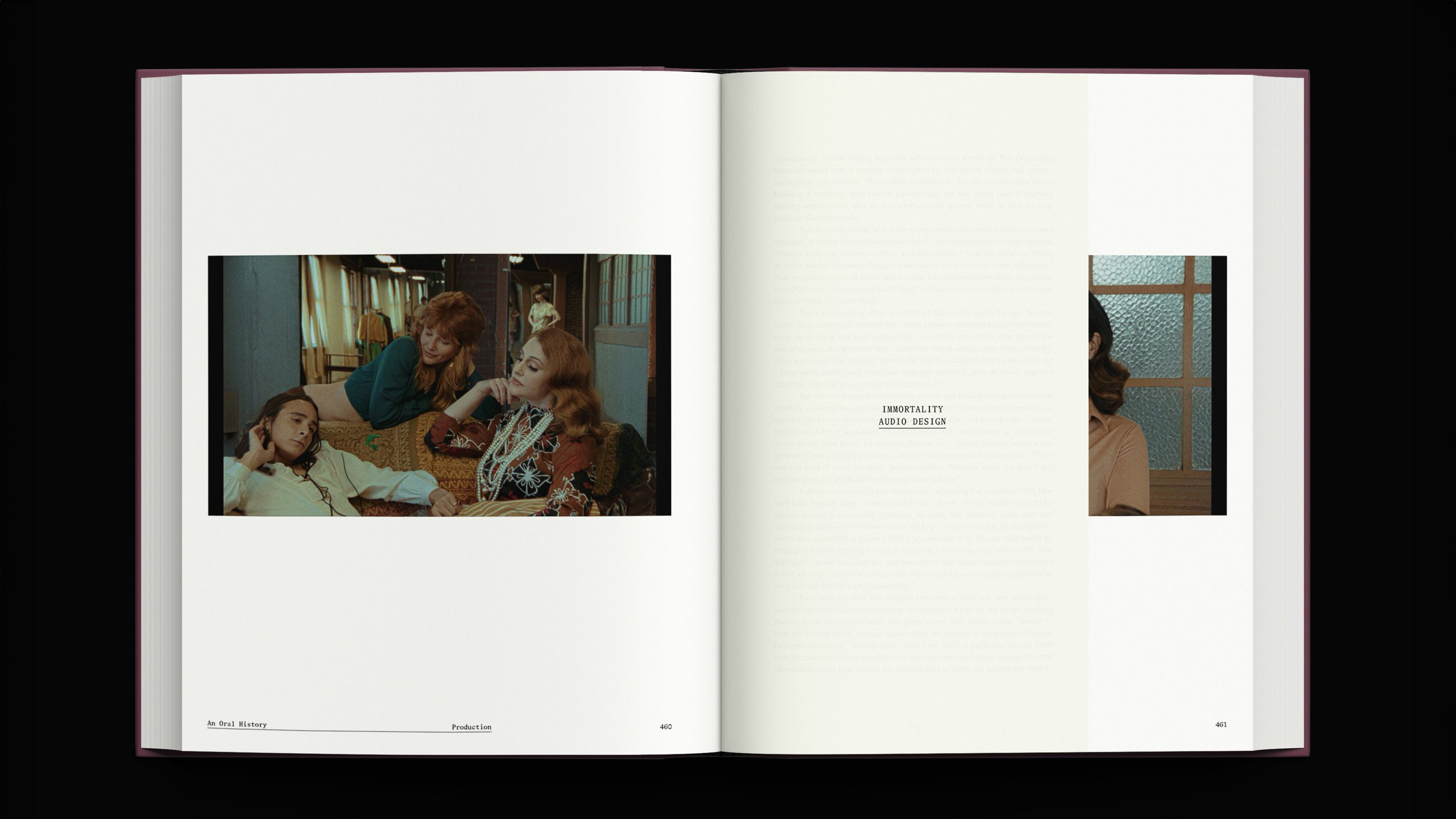
When it came to the book, Rachel says the team were more "constrained" with font choices. The reprinted script uses a traditional Courier font typical of typewriters, but Rachel wanted to go further. "I kind of went down this wormhole of looking at things that were similar, so other monospaced fonts, but I really wanted it to have a kind of eerie edge to it," she shares, explaining the need to draw out the paranormal tension the game evokes.
I kind of went down this wormhole
Rachel Dalton, Lost in Cult
"We found a font that is almost pointy, it's got an interesting…" she pauses, "there's something slightly unnerving about it, which I feel you get that feeling when you're playing the game, that something is not as it seems. So rather than going for the traditional approach of using the same font that you would always set a script in, we thought we'd look at something slightly different."
This kind of detail is what sets apart Lost In Cult. This book, part of its Design Works series, is a conceptualised physical representation of the game's themes. Rachel reveals the attention to detail will extend to actress Manon Gage making notes in the script from the perspective of the game's actress, Marissa Marcel, creating almost a new artefact to explore, to add yet another layer to the Immortality mythos.
The design and concept of the Immortality: Design Works book is emboldening the meta nature of the game. What could have been just another ‘making of’ book is, perhaps, developing a life of its own. It's a book on how a game was made, that details how three films were made for that game, with insights from the actress as the game's actress… We're down the rabbit hole.
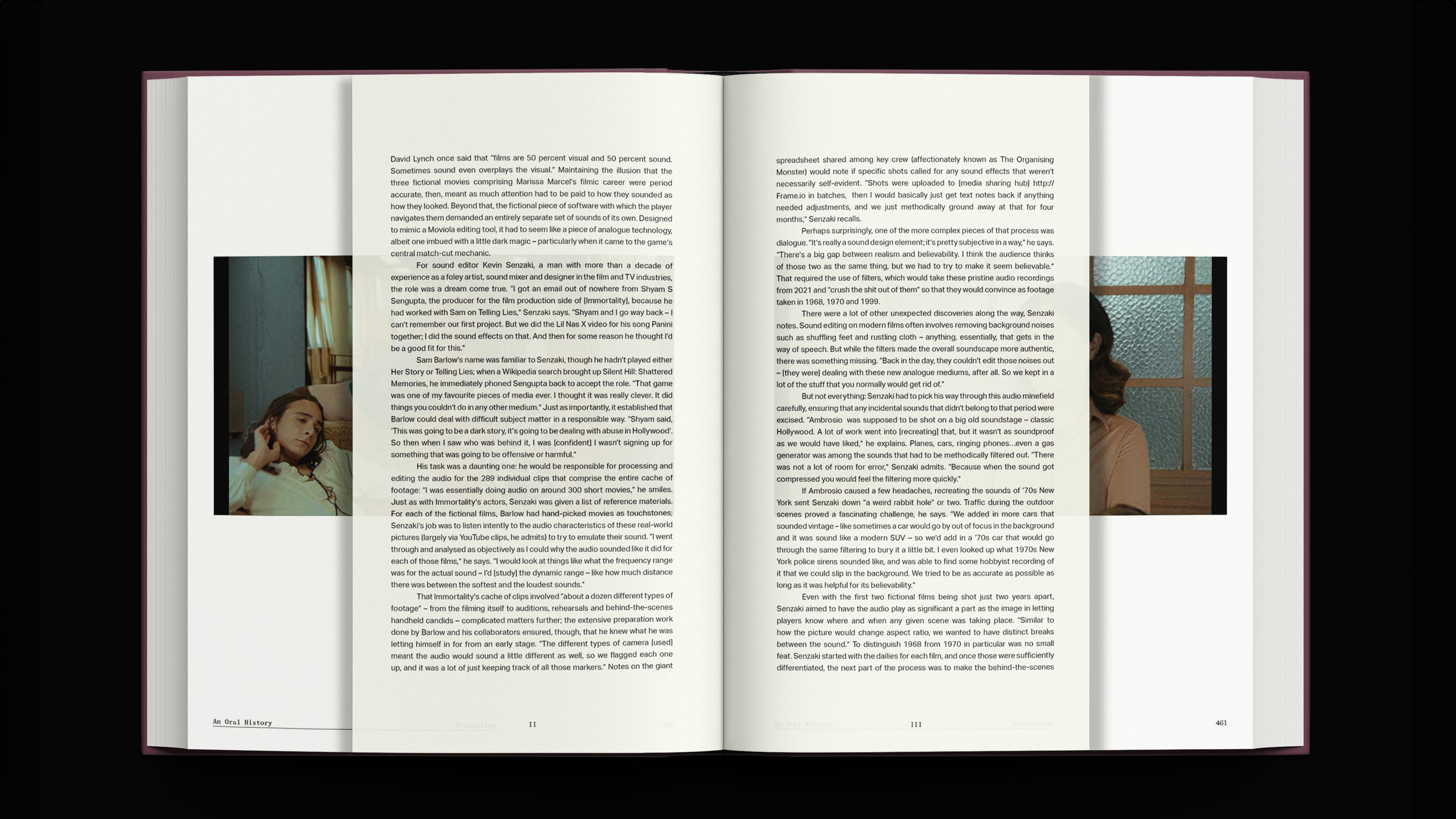
Immortality: Design Works is a record of making the game, and Rachel reflects on how that idea perfectly fits with this game in particular. She explains: "It's like an oral history in the same way that Immortality is concerned with how films are made, and the story around that, Lost In Cult, and the Design Work series especially, is concerned with how games are made".
Natalie Watson, game designer on Immortality at developer Half Mermaid jumps in here, telling me she loves how the book's design and concept physically manifests the ideas of the game. Just like the game, the book presents material and artefacts – on set photos, interviews and art – "then asks you to ask your own questions and go deeper," she says.
The game's interaction is being translated to the book with some fun details. The book, both Standard and Deluxe editions, will have three different paper stocks and some pages will be "cut short", says Rachel, emulating the layers of the game's investigations. Articles slip between oral history features, like a physical intervention in how you read the book. "[It's] mimicking the process of sifting through things," she tells me, explaining: "You're not just looking at something in a linear progression, you're kind of moving through different narratives.
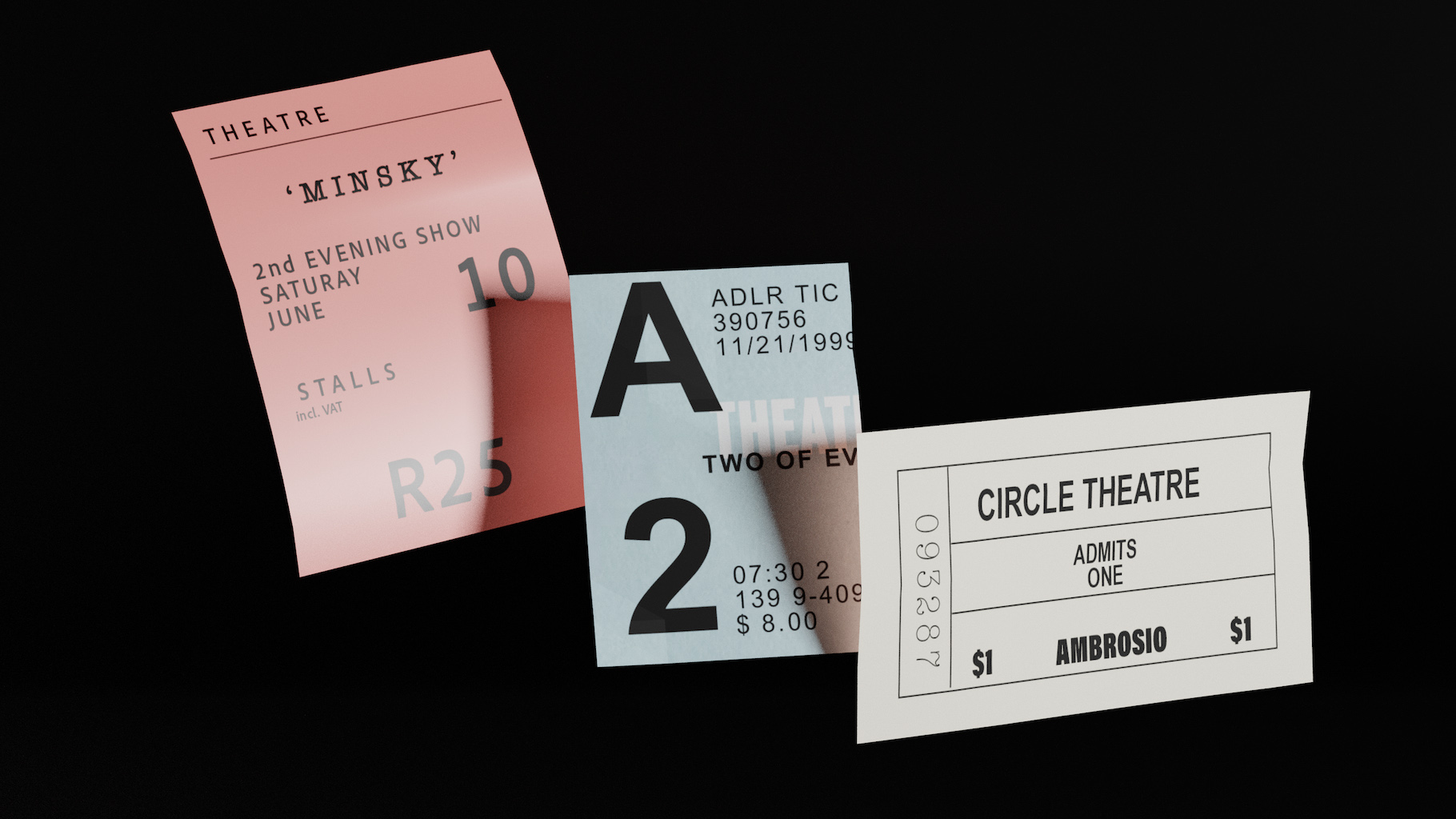
The book is a curated history of the game's development, but it also celebrates the world created for Immortality and presents it as an extension of the game's themes and ideas. Natalie teases the "supernatural" side of the book, where the material it features, and is made from, reflects the uneasy atmosphere of the game.
Rachel calls these the " creepy bits" and shares how the specific mechanic in the game, which takes you to a different place, and reveals a paranormal underbelly to the game, has been conceptualised for the book's design. "We're looking at ways of putting that onto the page and what kind of mechanical functions you can create in a book," says Rachel.
The themes of heat and fire from the game, for example, are being replicated in the book using thermo-reactive ink. "So there will be secrets emerging in the book when you are physically tactile with it," reveals Rachel, telling me this project is "such a nice brief".
She explains how the book will draw out the layers of game, delving into the hidden personalities and secrets of its stars, using French Folds (folding a page in on itself to create a hidden centre, read our guide to print terms) for readers to "peek inside", and explains how even the framing of the book's cover art feels "sinister" and "unnerving". The illustration crops into in-world actress Marissa Marcel's fixed smile, the longer you stare at her forced smile the more desperate it becomes.
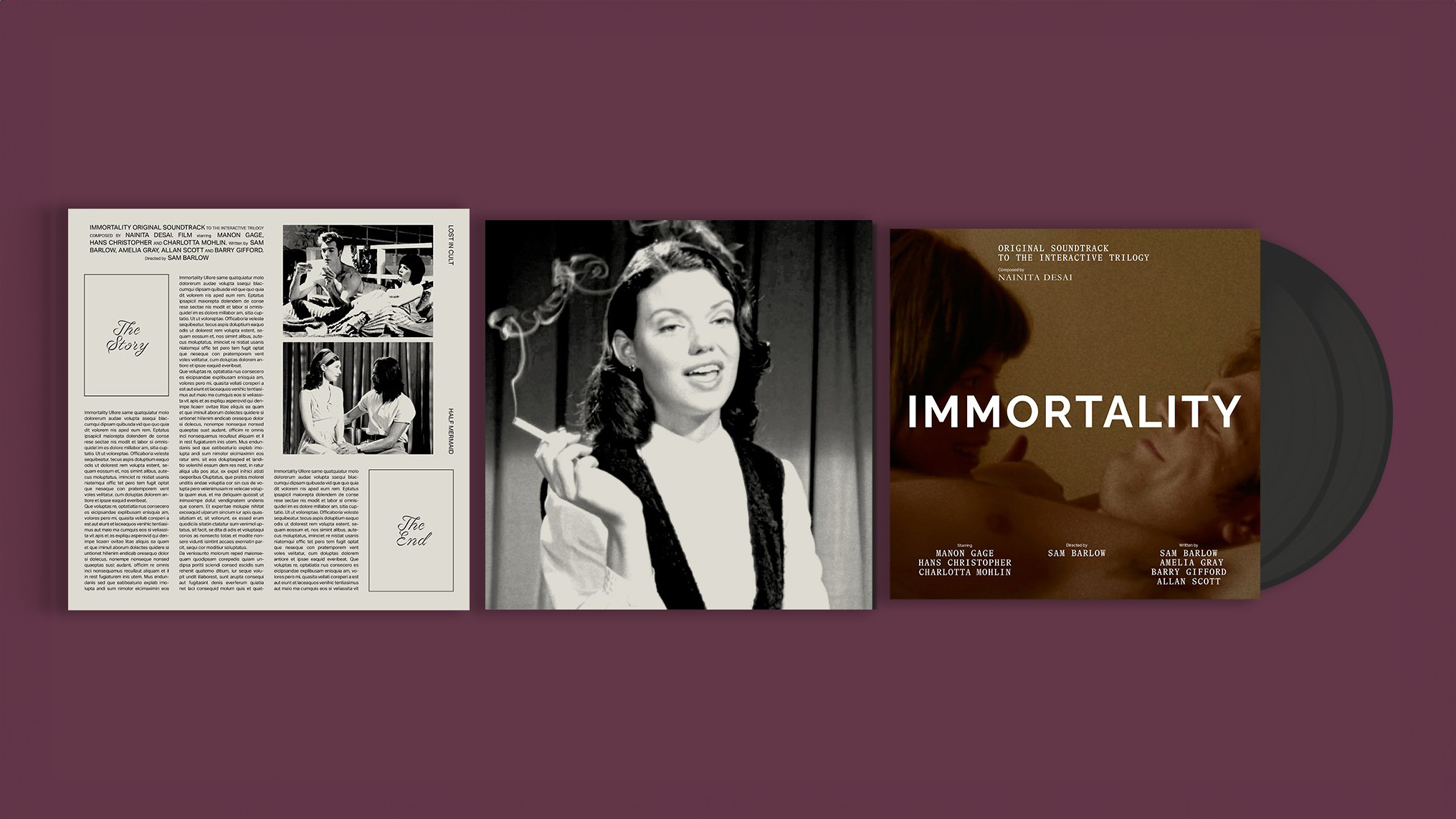
The way Lost In Cult has expressed the themes of Immortality physically in a book has impressed the game's creators. Natalie smiles and begins, "We're not, you know, bookmakers, we're game designers. And so we really wanted to encourage Lost In Cult to just have their way with things, to have as much freedom to explore through the medium that they know best.
When the Lost In Cult team came forward with new ideas Natalie says she was "in constant awe at the creativity […] these fascinating ideas inspired from the game to translate onto the medium of the page".
We're privileged to have had this opportunity for Immortality to be preserved in this way
Natalie Watson, Half Mermaid
Ultimately the goal of Immortality: Design Works is to preserve the creative work that went into making the game, from designers to video production and sound design. The 600 pages could have been more laughs Natalie, as every time writer Chris Schilling dug a little deeper there was more to say.
Natalie tells me: "It was such a labour of love from so many people bringing Sam's vision to life that I wanted to preserve that work. I was just so grateful that Lost In Cult was interested in making that happen and we're privileged to have had this opportunity for Immortality to be preserved in this way."
Rachel chips in, summing everything up perfectly: "The book is not just looking at how to make a game, it's looking at how to make a film, or three films, and not even just a film, it is a film within a film, it just goes on and on and on". She laughs: "It's a really, really interesting, complex project."
Sam Barlow’s horror game Immortality is now available on PS5. If you're still looking for a gaming device, read our guide to the best games consoles. If you're keen on interactive movies, read our feature on 'how to make an FMV game'.







